Ten minutes into our fossil hunt and my fossil count was a disappointing zero. My companion, Will Watts, on the other hand, had found at least six and had kindly offered a few to me as a goodwill gesture. I’d declined them out of sheer stubbornness. His high tally shouldn’t have surprised me as Will is a fossil expert and, he admitted, had been scouring the North Yorkshire coastline for fossils since he was a child.
A few moments later, he bent down and picked up a nondescript grey stone lying in a bed of similarly rounded stones of various sizes and colours. Pulling a geological hammer from his backpack, he gently tapped the edge of the stone, splitting it to reveal a partial ammonite.
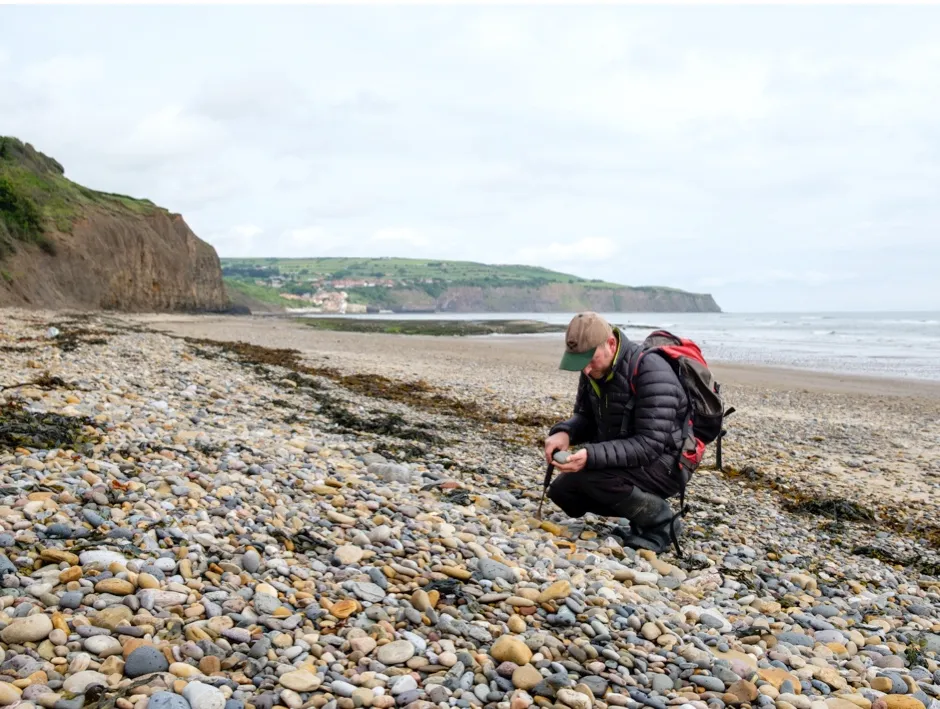
Peering at the incomplete fossil, he quickly concluded that we could find a much better one before discarding it on the beach for someone else to discover. How, I asked in complete bafflement, did he even spot that fossil? "It’s all to do with the shape and texture of the stones," he explained. "They’re often a bit misshapen and you can see a lump or a mark on them – also you’re more likely to find fossils at the high-tide mark."
We were wandering along the high-tide mark at Boggle Hole (a ‘boggle’ being local dialect for a hobgoblin, which, according to legend, roams the cliffs), a small sheltered bay a mile south of Robin Hood’s Bay on the Yorkshire coast. Once a notorious haunt for smugglers – its secluded location and caves perfect for landing and hiding contraband – these days it attracts people drawn to its status as a Site of Special Scientific Importance for trace fossils (an imprint of an organism, as opposed to its physical remains).
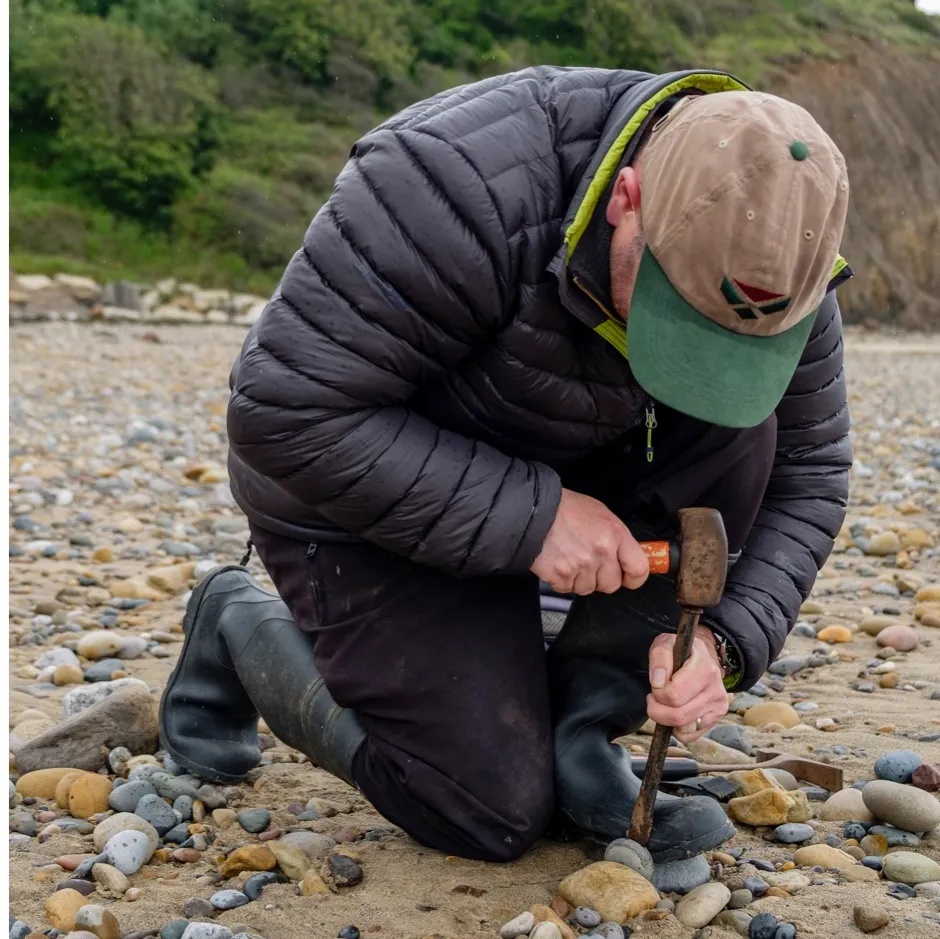
The type of rock that forms Yorkshire’s coastline, Will informed me, was the same as that found on Dorset’s famous coastline, the Jurassic Coast World Heritage Site, the result of a band of rock – formed between 205 million and 145 million years ago during the Jurassic Period – that runs across England from the south coast to this particular section of the north-east coast.
Read more about fossils:
Aided by much pointing from Will, after 20 minutes of meticulously combing the beach I finally discovered my first fossil – a broken section of an ammonite, the ridges of its spiral shell clearly visible – after treading on it with my left foot. "The rule," explained Will kindly, "is if you step on a fossil you can claim it as a find."
This first find seemed to set the ball rolling, and once Will had introduced me to various types of fossil, from the wonderfully named devil’s toenail (an extinct oyster with its gnarly-shaped shell the ‘toenail’) to the bullet-shaped belemnite (the body part of a 10-armed prehistoric squid), I was soon spotting fossils everywhere.
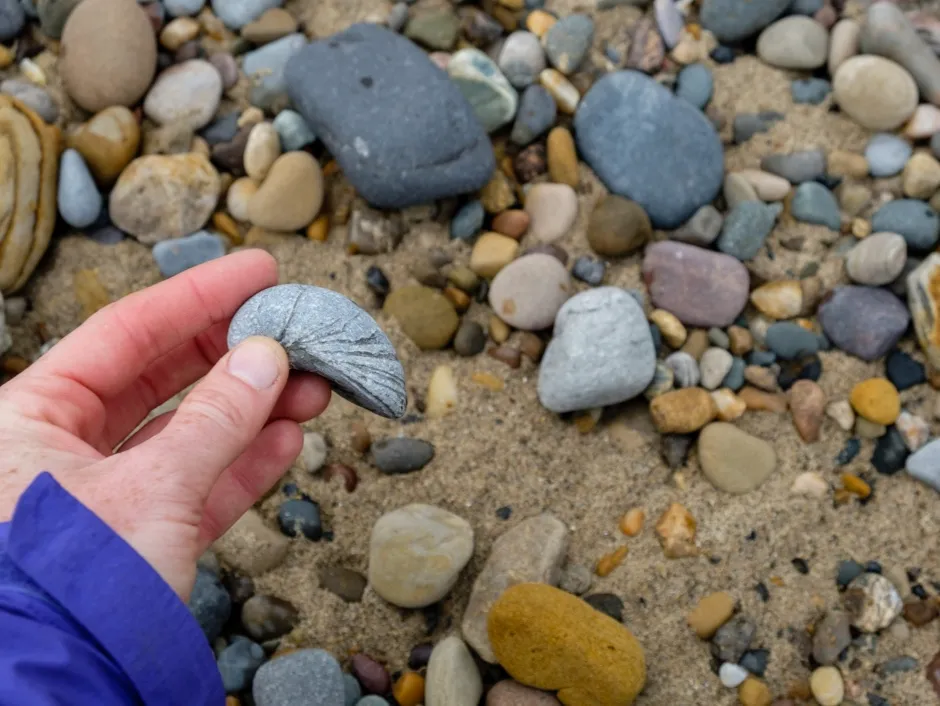
Caught up in my new-found interest in finding fossils it would have been easy to spend my entire time at Boggle Hole staring obsessively at the ground. But with the tide at its lowest I became distracted by a magnificent expanse of beach with uninterrupted views: northwards to the cluster of red-roofed cottages that make up the picturesque fishing village of Robin Hood’s Bay and southwards to Ravenscar headland with its outline of the remnants of the Victorian resort that never was. Apart from a distant dog walker and a trio of oystercatchers foraging on the tideline, we were alone on the beach.
An hour into our hunt and I was the proud owner of a dozen fossils, which, after much deliberation, I managed to whittle down to a couple of favourites. But unbeknownst to me the best was yet to come. As we wandered back along the beach, Will stopped abruptly and, with a knowing smirk on his face, picked up a peculiar-looking stone. "Now this is what I hoped to find," he exclaimed. "It’s known as a burger bun fossil." And understandably so, as its form looked, well, just like a burger inside a bun.
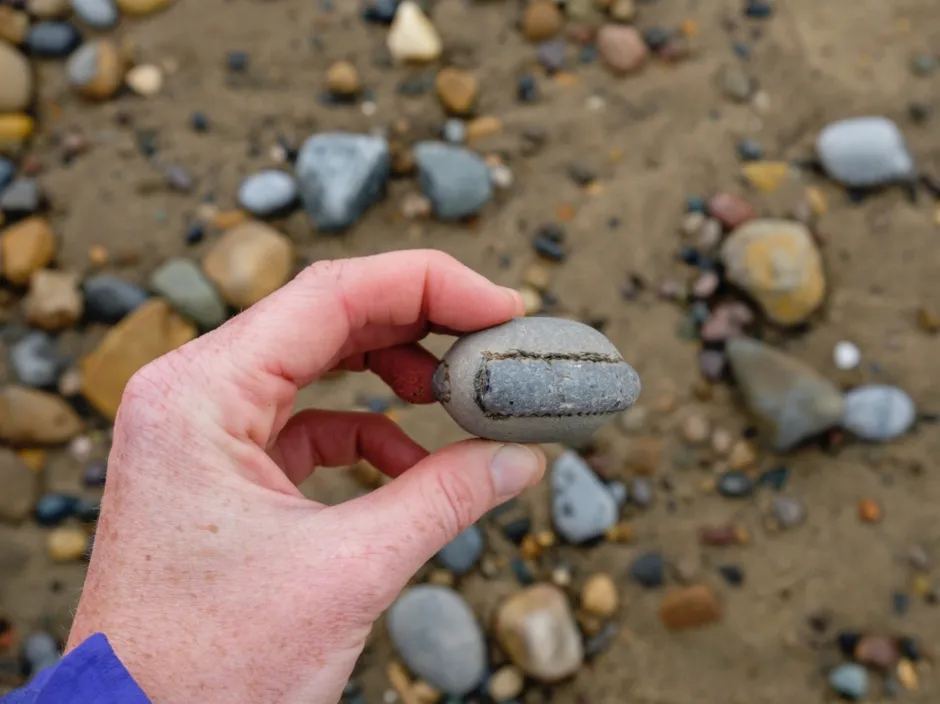
Placing the stone on the ground he expertly positioned a chisel in between the burger (the edge of the fossil) and the bun (the upper section of the stone) before tapping it gently with his hammer. Unsure what I was about to witness, I hovered nearby in anticipation.
Hearing a gentle crack, Will lifted the stone in his hand and gestured to me to lift off the top half of stone. And there, underneath the lid, was a perfect ammonite. "I never tire of that moment," smiled Will, looking at my unashamedly astounded expression. It was an utterly magical moment, especially when it dawned on me that I was the first living being to view the imprint of that fossilised creature in 200 million years.
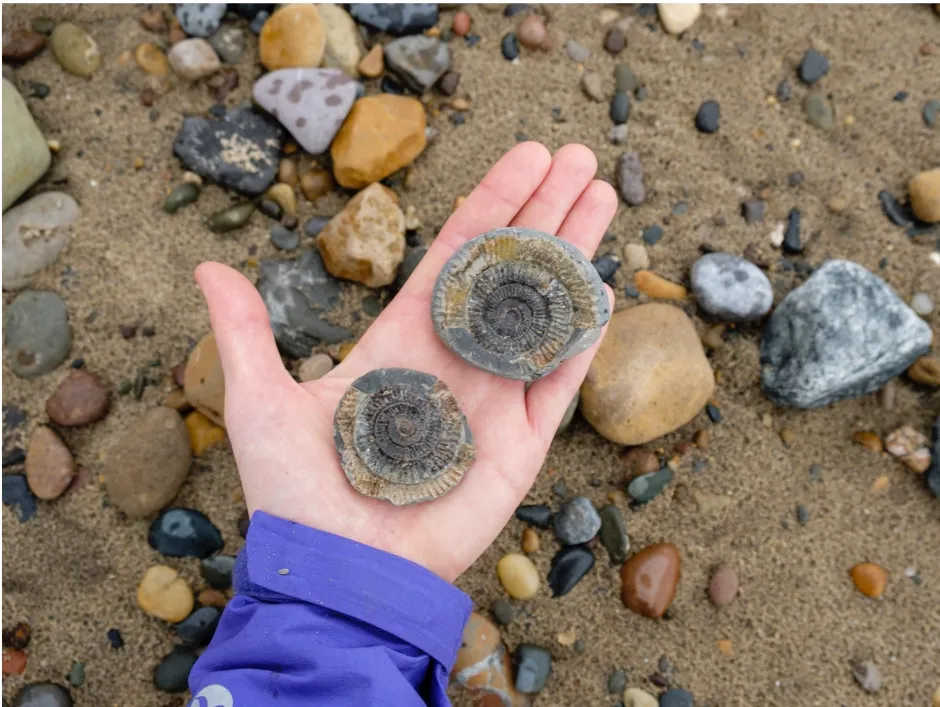
Where to go fossil-hunting in the UK
There are plenty of locations along the UK’s coastline where you can journey back in time and find clues to prehistoric life. Head to one of these locations to hunt for fossils or discover dinosaur footprints:
Lyme Regis, Dorset
Situated on the Jurassic Coast World Heritage Site, where the rugged West Dorset and East Devon coastlines meet, the rocks along this stretch of coastline date from the Early Jurassic period, up to 200 million years ago. The volume and quality of fossil finds at Lyme Regis have made it one of the most famous fossil locations in the world
Compton Bay, Isle of Wight
The Isle of Wight has the richest source of dinosaur remains in Europe, and Compton Bay, on the south-west coast of the island, is the ideal place to hunt for them. To date, over 20 different species of dinosaurs have been found fossilised here, and dinosaur footprints are clearly visible at low tide
Hunstanton, Norfolk
Formed during the Late Cretaceous period, around 100 million years ago, the spectacular cliffs of red rock and white chalk at Hunstanton, on the north-west coast of Norfolk, are rich in fossils of prehistoric marine fauna, including ammonites, belemnites, brachiopods, bivalves and sponges
Herne Bay, Kent
The cliffs and foreshore between Herne Bay and Reculver on the Kent coast provide ample opportunities to discover fossils dating from over 50 million years ago, with shark teeth the most prevalent type of fossil found. For the best chance of finding these prehistoric treasures, head to the beach at Beltinge just east of Herne Bay.
Where can I find fossils?
Fossils can be found in many different places, but they are generally spotted at the beach. This is great news, as the seaside is easily accessible and free for everyone to visit! You may find them in among the rocks and pebbles on the seashore, and they can even be seen in cliffs.
The colder months are often a great time to go hunting for fossils, as stormy weather and rough seas will break down rock and uncover new specimens. See, you don’t need sunny weather to enjoy a trip to the beach!
While beaches are the most common place to spot fossils, they are not the only location. They can also be found at quarries, where years of excavation activity has exposed the rock. Be aware that you’ll have to seek permission from the quarry owner before visiting, and will need to comply with any safety guidelines. Consider going on an organised fossil-hunting trip if you’re unsure.
Fossils may also be spotted around rivers and streams, as they can be washed out of the beds and banks. They can even be found in farmland, particularly if the field contains chalky soil and is frequently ploughed (ask the landowner for permission before entering).
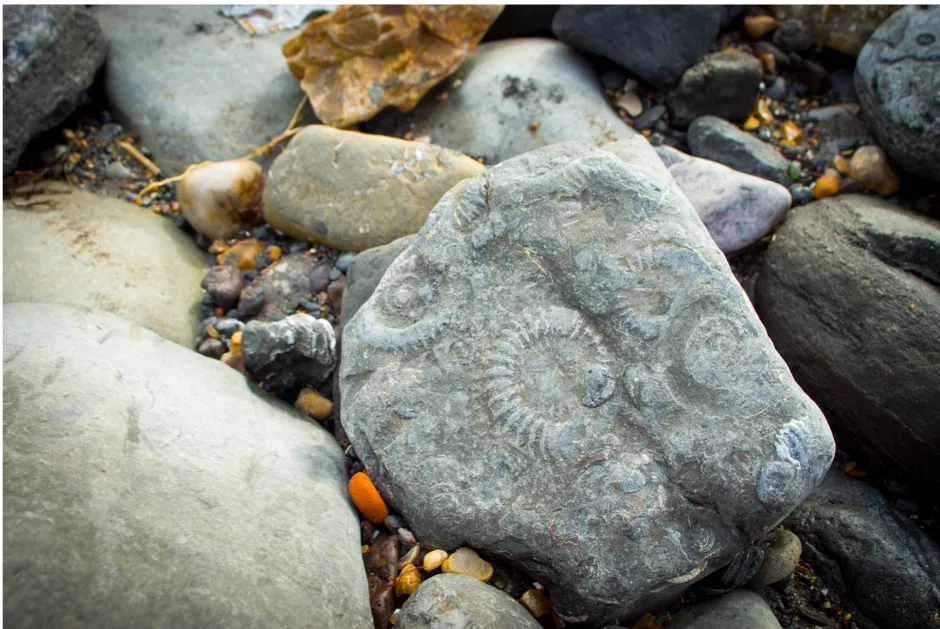
What equipment will I need to find fossils?
A lot of fossils can be found loose among stones, rock and sand, so when you’re starting out, all you’ll need is a keen pair of eyes! At the beach, it’s really important to be aware of tide times so you don’t get cut off. The best time to hunt for fossils is when the tide is on its way out – you can buy tide table books, or download apps for your phone.
If you want to split rocks open, then you could purchase a geological hammer, which are widely available online. If you’re hammering at rocks, then consider wearing safety glasses to protect your eyes from any shards. Take some kitchen paper or newspaper to wrap up any of your finds to keep them safe on the way home.
It’s also a good idea to wear sturdy shoes or boots for scrambling over rock. And don’t forget to pack a mobile phone – not only can you snap pictures of fossils, but you’ll also be able to call for help if you get into difficulty.
For safety reasons, don’t go hammering into any cliff faces.
Fossil-hunting and the law
Pay attention to any restrictions. At certain sites, such as those that are important for wildlife, there will be clear signage telling you that fossil-collecting is not allowed.
In the UK, it is generally fine for amateur hunters to pick up any fossils that they find on the seashore. Collecting from cliff faces should be left to the experts (and is forbidden in certain areas, such as the Jurassic Coast). If you do see something exciting embedded in a cliff, then take a picture and make a note of the location. Contact a local museum or fossil expert for help.
Extracted from Slow Adventures: Unhurriedly Exploring Britain's Wild Places by Tor McIntosh (£12.99, National Trust Books).
- Buy now from Bookshop, Waterstones or Amazon